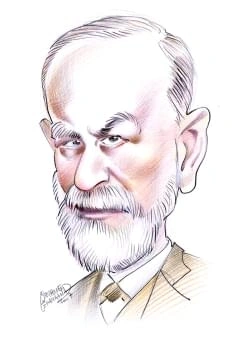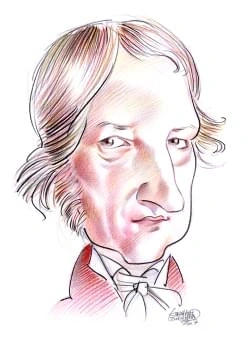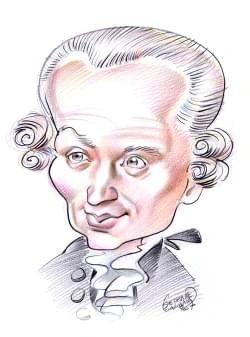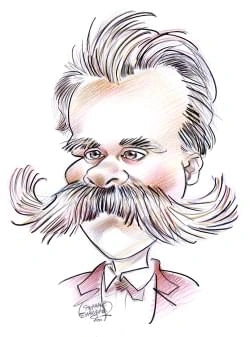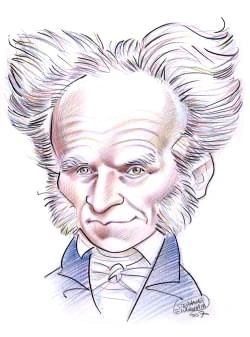787 résultats pour "percent"
-
Italy - country.
C Natural Resources Italy is poor in natural resources. Much of the land is unsuitable for agriculture because of mountainous terrain or unfavorable climate. Italy, moreover, lacks substantialdeposits of basic natural resources such as coal, iron, and petroleum. Natural gas is the country’s most important mineral resource. Other deposits include feldspar andpumice. Many of Italy’s mineral deposits on the islands of Sicily and Sardinia had been heavily depleted by the early 1990s. Italy is rich...
-
Tobacco - biology.
quality cigars are made entirely by hand, most cigars are manufactured by machine. Chewing tobaccos are generally made from thick grades of leaves to which binders and flavorings are added. Chewing tobacco is formed by pressing the tobacco intoblocks known as plugs. Snuff is made by grinding tobacco into fine powder, which is then allowed to ferment for a long period of time. Frequently, snuff is scented withspices, such as jasmine or cloves. V TOBACCO INDUSTRY Over 6 million tons of commercial...
-
Railroads.
III GAUGES The gauge of track is the distance between the inner edges of the rails at points 1.59 cm (0.626 in) below the top of the heads. In the United States, Canada, theUnited Kingdom, Mexico, Norway, Sweden, and much of continental Europe, the standard gauge is 143.51 cm (56.5 in). Why this measurement became the standard isa matter of speculation. Probably the tradition is inherited from early tramroads built to accommodate wagons with axles 1.5 m (5 ft) long; some of the early edge rail...
-
Aging - biology.
Different theories have been proposed to explain how SF works. One theory is based on the assumption that aging, and diseases that occur more frequently withadvancing age, are caused by structural damage to cells. This damage accumulates in tiny amounts each time the cell divides, eventually preventing the cell fromcarrying out normal functions. One cause of this damage may be free radicals, which are chemical compounds found in the environment and also generated by normal chemical reactions in...
-
Suicide.
C Sociological Theories Most social scientists believe that a society’s structure and values can influence suicide rates. French sociologist Émile Durkheim argued that suicide rates are related tosocial integration —that is, the degree to which an individual feels part of a larger group. Durkheim found suicide was more likely when a person lacked social bonds or had relationships disrupted through a sudden change in status, such as unemployment. As one example of the significance of social bond...
-
Depression (psychology).
IV CAUSES Some depressions seem to come out of the blue, even when things are going well. Others seem to have an obvious cause: a marital conflict, financial difficulty, or somepersonal failure. Yet many people with these problems do not become deeply depressed. Most psychologists believe depression results from an interaction betweenstressful life events and a person’s biological and psychological vulnerabilities. A Biological Factors Depression runs in families. By studying twins, researche...
-
Jamaica - country.
majority, the Church of God, Baptists, Anglicans, Seventh-day Adventists, Pentecostalists, and Roman Catholics predominate. Several well-established Jewish, Muslim,and Hindu communities exist. A number of popular sects, such as Pocomania and Rastafarianism, are a significant and famous feature of the national religious life. C Education School attendance by children between the ages of 6 and 11 is nearly universal, and 84 percent of all 12- to 18-year-olds attend secondary institutions. In 2000...
-
Nuclear Weapons.
Regardless of the method used to attain a supercritical assembly, the chain reaction proceeds for about a millionth of a second, liberating vast amounts of heat energy.The extremely fast release of a very large amount of energy in a relatively small volume causes the temperature to rise to tens of millions of degrees. The resultingrapid expansion and vaporization of the bomb material causes a powerful explosion. VI PRODUCTION OF FISSILE MATERIAL Much experimentation was necessary to make the p...
-
-
Hugo Chávez.
VII 2006 PRESIDENTIAL ELECTION AND AFTER Chávez easily won reelection in the 2006 presidential contest. Although opposition parties had boycotted legislative elections in 2005, they returned to the electoralprocess in 2006. Nevertheless, Chávez won handily with about 63 percent of the vote as most Venezuelans appeared to approve of the way the country’s oil wealth wasbeing distributed. Following the election, Chávez asked the National Assembly for the power to rule by decree for a period of 18...
-
Planetary Science - astronomy.
III ORIGINS AND COMPOSITIONS OF PLANETS Astronomers believe that planetary systems are formed of elemental materials that were created in the interiors of giant stars. Some of this material comes from giantstars that shed material into space as they age. Most of the matter to form planets, however, comes from stars that explode as supernovas and spread debris enrichedwith the heavier chemical elements into space. According to the currently accepted views, the most likely first stage in the evo...
-
Sun - astronomy.
A The Sun’s Place in the Milky Way The Milky Way Galaxy contains about 400 billion stars. All of these stars, and the gas and dust between them, are rotating about a galactic center. Stars that arefarther away from the center move at slower speeds and take longer to go around it. The Sun is located in the outer part of the galaxy, at a distance of 2.6 × 10 17 km (1.6 × 10 17 mi) from the center. The Sun, which is moving around the center at a velocity of 220 km/s (140 mi/s), takes 250 million y...
-
Environment.
escape into space of the infrared energy radiated back out by Earth. This process is referred to as the greenhouse effect. These gases, primarily carbon dioxide,methane, nitrous oxide, and water vapor, insulate Earth’s surface, helping to maintain warm temperatures. Without these gases, Earth would be a frozen planet with anaverage temperature of about -18°C (about 0°F) instead of a comfortable 15°C (59°F). If the concentration of these gases rises, they trap more heat within theatmosphere, caus...
-
Cotton - biology.
VII COTTONSEED Once a waste-disposal problem for gins, cottonseed is now a valuable by-product. The seed goes to oil mills, where it is delinted of its linters in an operation similar toginning. The bare seed is then cracked and the kernel removed. The meal that remains after the oil has been extracted is high in protein. Linters are used for paddingin furniture and automobiles, for absorbent cotton swabs, and for manufacture of many cellulose products such as rayon, plastics, lacquers, and sm...
-
Lima (Peru) - geography.
home to a wide range of museums, many focusing on Peru’s indigenous heritage. These include the National Museum of Anthropology and Archaeology, the GoldMuseum of Peru, the Museum of the Central Reserve Bank, and the Rafael Larco Herrera Museum, which specializes in pre-Hispanic ceramics. Art and history museumsare also found in metropolitan Lima, including the National Museum of the Republic, the Museum of Peruvian Culture, and the Museum of the Inquisition, in the buildingwhere colonial Cathol...
-
Euthanasia.
permission from the family. B In Other Countries In 1995 the Northern Territory of Australia became the first jurisdiction to explicitly legalize voluntary active euthanasia. However, the federal parliament of Australiaoverturned the law in 1997. In 2001 The Netherlands became the first country to legalize active euthanasia and assisted suicide, formalizing medical practices that thegovernment had tolerated for years. Under the Dutch law, euthanasia is justified (not legally punishable) if the...
-
Wetland.
Other plants and animals have special adaptations suited for living in a wet environment. Most emergent plants have air spaces in their stems that enable oxygen to betransported to roots that grow in sediments with no oxygen. Some of the trees that grow in swamps form a set of roots above the soil surface or above the water thatallows them to get oxygen to the lower roots. In saltwater wetlands, specialized cells can limit the amount of salt that enters a plant, or specialized organs can excrete...
-
-
Exercise.
broad, and most studies suggest a positive relationship between physical fitness and mental achievement. The relationship between regular aerobic exercise and cardiovascular health and longevity is well established. Regular exercise leads to a reduction in the risk ofcoronary heart disease, in which fatty deposits (plaque) form in blood vessels supplying the muscular wall of the heart, compromising oxygen delivery to the heartmuscle. In addition, with regular exercise the efficiency of the heart...
-
Big Bang Theory - astronomy.
hydrogen atoms. Hydrogen atoms can only absorb and emit specific colors, or wavelengths, of light. The formation of atoms allowed many other wavelengths of light,wavelengths that had been interfering with the free electrons prior to the cooling of the universe, to travel much farther than before. This change set free radiation thatwe can detect today. After billions of years of cooling, this cosmic background radiation is at about 3 K (-270°C/-454°F).The cosmic background radiation was first d...
-
Tuberculosis.
TB has existed for thousands of years. Scars on a skull found in Turkey indicate the presence of the disease 500,000 years ago. Scientists also have found tubercles inmummified bodies from ancient Egypt. References to TB can be found in the writings of ancient Babylonia, Egypt, and China. The term tuberculosis was first used in 1839; it was derived from the Latin word tubercula, meaning small lump, referring to the small scars seen in tissues of infected individuals. TB reappeared in Europe...
-
Sexually Transmitted Infections.
D Genital Herpes Genital herpes is caused by infection with the herpes simplex virus (HSV). Most cases of genital herpes are due to HSV type 2. Some cases, however, result from genitalinfections with HSV type 1, a common cause of cold sores. Genital herpes causes recurrent outbreaks of painful sores on the genitals, although the disease oftenremains dormant with no symptoms for long periods. In the United States, one in five individuals over the age of 12 is infected with HSV type 2, and the va...
-
Yangtze - Geography.
A Agriculture and Industry Today about 400 million people, or about one-third of the population of China, live in the Yangtze Basin. Many are engaged in agriculture. The basin contributes nearlyhalf of China’s crop production, although only one-quarter of the basin is arable. The most fertile areas for farming are the Sichuan Basin, the plains between theYangtze and its tributary the Han, and the plains of the lower basin. In all about 40 percent of the cereals, more than 30 percent of the cott...
-
Gambling.
C Lotteries Lotteries are another form of gambling. In a lottery, tickets are sold for a set amount and a share of the proceeds is returned to the winners, usually through a randomdraw. Most games allow players to pick their own numbers or let a computer randomly pick for them. Lotteries offer a wide variety of games, including weekly drawings,instant “scratch” tickets, daily games, and superlottos with prizes increasing until there is a winner. Large lottery prizes sometimes exceed $100 millio...
-
Statistics
I
INTRODUCTION
Statistics, branch of mathematics that deals with the collection, organization, and analysis of numerical data and with such problems as experiment design and decision
making.
Professional pollsters typically conduct their surveys among sample populations of 1,000 people. Statistical measurementsshow that reductions in the margin of error flatten out considerably after the sample size reaches 1,000.© Microsoft Corporation. All Rights Reserved. The raw materials of statistics are sets of numbers obtained from enumerations or measurements. In collecting statistical data, adequate precautions must be taken tosecure complete and accurate information. The first problem of...
-
Honey Bee - biology.
B Reproduction and Development The queen controls the sex of her offspring. When an egg passes from her ovary to her oviduct, the queen determines whether the egg is fertilized with sperm from thespermatheca. A fertilized egg develops into a female honey bee, either worker or queen, and an unfertilized egg becomes a male honey bee, or drone. The queen lays the eggs that will develop into more queens in specially constructed downward-pointing, peanut-shaped cells, in which the egg adheres to the...
-
-
Thomas Edison.
While Edison was working on the electric light, he made a scientific discovery that would become important to future generations. Edison noticed that particles of carbonfrom the filament blackened the insides of his light bulbs. This effect was caused by the emission of electrons from the filament, although Edison made the discoverybefore he and other scientists knew the electron existed. Not until 1897 did British physicist J. J. Thomson prove that the blackening observed by Edison was caused b...
-
Thomas Edison - USA History.
While Edison was working on the electric light, he made a scientific discovery that would become important to future generations. Edison noticed that particles of carbonfrom the filament blackened the insides of his light bulbs. This effect was caused by the emission of electrons from the filament, although Edison made the discoverybefore he and other scientists knew the electron existed. Not until 1897 did British physicist J. J. Thomson prove that the blackening observed by Edison was caused b...
-
Biodiversity.
a common molecule, ribonucleic acid (RNA), and most also have deoxyribonucleic acid (DNA). These molecules direct the production of proteins—molecules responsiblefor the structure and function of virtually all living cells. This is the evolutionary chain of life. All species are descended from a single common ancestor. From that ancient single-celled microbe, all inherited RNA. As time goesby, species diverge and develop their own peculiar attributes, thus making their own contribution to biodiv...
-
Biodiversity - biology.
a common molecule, ribonucleic acid (RNA), and most also have deoxyribonucleic acid (DNA). These molecules direct the production of proteins—molecules responsiblefor the structure and function of virtually all living cells. This is the evolutionary chain of life. All species are descended from a single common ancestor. From that ancient single-celled microbe, all inherited RNA. As time goesby, species diverge and develop their own peculiar attributes, thus making their own contribution to biodiv...
-
Ice Skating.
cold climate. Competitors for these events are chosen from the best skaters in each participating country, usually through preliminary national competitions. Speedskaters also compete on a World Cup circuit, which pits the world’s best skaters against one another during the year. A Figure Skating The major types of competitive figure skating are individual men’s and women’s competitions, pairs skating, ice dancing, and precision skating. In individualcompetitions a single skater performs requir...
-
River.
IV RIVER PATTERNS River patterns, or general shapes, depend on the geologic zone and the climate of the location. There are four river patterns: meandering, braided, anastomosing, andstraight. A meandering pattern follows a winding, turning course. A braided pattern has connected channels that resemble a hair braid. An anastomosing river patterncombines features of the meandering and braided patterns. Some river patterns are simply straight channels. Meandering and braided are the most common...
-
River - Geography.
IV RIVER PATTERNS River patterns, or general shapes, depend on the geologic zone and the climate of the location. There are four river patterns: meandering, braided, anastomosing, andstraight. A meandering pattern follows a winding, turning course. A braided pattern has connected channels that resemble a hair braid. An anastomosing river patterncombines features of the meandering and braided patterns. Some river patterns are simply straight channels. Meandering and braided are the most common...
-
National Socialism .
VII THE PARTY IN THE REICHSTAG The movement grew rapidly, recruiting thousands of discharged civil servants, ruined shopkeepers and small-business owners, impoverished farmers, workersdisillusioned with the Socialist and Communist parties, and a host of frustrated and embittered young people of all classes, brought up in the postwar years and withouthope of personal economic security. In the Reichstag elections of 1930 the National Socialists polled almost 6.5 million votes (more than 18 perce...
-
-
Heredity - biology.
allele from the mother and a mutated allele from the father. In both of these cases, the child will be a carrier. The child develops the disease only if he or she receives amutated allele from each parent. When both parents are carriers, there is a 25 percent chance that a child will be disease-free, a 25 percent chance that it will have thedisease, and a 50 percent chance that it will be a carrier. Examples of genetic diseases that follow the dominant-recessive pattern include sickle-cell anemi...
-
Panama Canal - Geography.
The size of ships using the Panama Canal has steadily increased. About 27 percent of the vessels that use the canal are built to the maximum dimensions that can passthrough it (a category called “Panamax”). This has prompted further widening of Gaillard Cut, so that the larger Panamax vessels may transit safely. However, some ofthe world’s commercial and military ships are too large for the canal. Since the 1940s, new U.S. battleships and aircraft carriers have been built exceeding the canal’sdi...
-
Respiratory System.
rapidly, or laughs while swallowing, the swallowing reflex may not work, and food or fluid can enter the larynx. Food, fluid, or other substances in the larynx initiate acough reflex as the body attempts to clear the larynx of the obstruction. If the cough reflex does not work, a person can choke, a life-threatening situation. TheHeimlich maneuver is a technique used to clear a blocked larynx ( see First Aid). A surgical procedure called a tracheotomy is used to bypass the larynx and get air to...
-
Baltimore - geography.
ranging collections. The Lillie Carroll Jackson Museum honors the civil rights leader who was president of Baltimore’s National Association for the Advancement of ColoredPeople (NAACP) chapter from 1935 to 1970. Also of note are the Baltimore Symphony Orchestra and the Baltimore Opera Company. VII HISTORY Before European settlement, the site of Baltimore was inhabited by a Native American people known as the Susquehannock. The area was explored by English soldier JohnSmith in 1608 and was settl...
-
Québec (city) - Geography.
rotates between the mayors of small, medium, and core municipalities. The QUC is responsible for zoning, regional development, property valuation, waste disposal, andtourism promotion. City planning and public transit are handled in collaboration with the municipalities. Other municipal functions such as public works, libraries, water,parks, fire and police services, street repair, and traffic control are left to the municipalities. VII CONTEMPORARY ISSUES In recent years the St. Lawrence Rive...
-
Guinea - country.
Mining operations in 2004 yielded 16 million metric tons of bauxite, 468,400 carats of high-quality diamonds, and 16,000 kg (35,300 lb) of gold. Environmental concernsand political instability in neighboring Liberia have delayed exploitation of high-grade iron ore from Mount Nimba. In 1999 the national budget included $466 million in revenues and $414 million in expenditures. The unit of currency is the Guinean franc, which is divided into 100 centimes (3,644 francs equal U.S.$1; 2005 average...
-
Togo - country.
corn, millet, and sorghum. The leading export crops are coffee, cotton, groundnuts, and cacao. Livestock, chiefly sheep and goats, are raised on the northern plateau.Fish are caught in Togo’s rivers and in the Gulf of Guinea. B Mining and Manufacturing Togo is a leading producer of phosphates, which are by far the country’s most significant mineral product. In 2004, 400,000 metric tons of phosphate rock were mined.Industrial activity is limited but growing. The leading manufactures include ceme...
-
Sierra Leone (country) - country.
commodities such as palm oil, palm kernels, coffee, cacao, ginger, kola nuts, and piassava (palm fibers) are grown for export. Cattle, goats, and sheep are raised, andthe fishing industry is of increasing importance. B Mining Gem and industrial diamonds are the leading mineral products of Sierra Leone. In 2004, 309,390 carats of gem-quality diamonds were produced. Rutile, a titanium oreof which Sierra Leone has one of the world’s largest deposits, and bauxite are also mined in large quantities....
-
-
Las Vegas (Nevada) - geography.
way for the Paiute people. In the late 1820s early Spanish explorers searching for water discovered an oasis in the region that now contains the city. They named theoasis “Las Vegas,” Spanish for “the meadows.” These expanses of wetlands, once irrigated by artesian waters carried under pressure from the nearby mountain ranges,were a main draw to southern Nevada until the 1940s. Las Vegas was an important stop along the Old Spanish Trail between Santa Fe, New Mexico, and southern California for m...
-
Republic of Indonesia - country.
Mahakam in East Kalimantan and the Martapura and Barito in South Kalimantan. Most of these rivers originate in the island’s central massif (mountain mass) and meander through extensive swamps as they approach the coast. Settlements such as Samarinda and Banjarmasin cluster along the rivers, which serve ascommunication routes into the interior. The largest rivers on Sumatra drain from west to east into the Strait of Malacca. In the north, the Asahan River once linked trade between the Batak peo...
-
Whitehorse - Geography.
Another issue in Whitehorse is water quality. Bacteria levels in Schwatka Lake, the city’s water source, have increased in recent years due to population growth in areasabove the lake. In addition, the city’s sewage treatment system discharges wastewater into the Yukon River. The level of waste treatment is not adequate, and thesewage poses a health hazard. Whitehorse is presently improving its sewage treatment system. VII HISTORY Whitehorse was founded during the Klondike gold rush of the lat...
-
Djibouti (country) - country.
l’Unité et de la Démocratie (FRUD; Front for the Renewal of Unity and Democracy) represents the Afar minority. The Parti National Démocratique (PND; Democratic National Party) and the Parti du Renouveau Démocratique (PRD; Democratic Renewal Party) are both small opposition parties favoring democratic reforms. VI HISTORY Djibouti lies at a major global crossroads where, some 100,000 years ago, early humans migrated from Africa to the Middle East. Livestock herding, which remainsimportant...
-
Poverty.
economic and demographic trends, and (7) welfare incentives. A Overpopulation Overpopulation, the situation of having large numbers of people with too few resources and too little space, is closely associated with poverty. It can result from highpopulation density (the ratio of people to land area, usually expressed as numbers of persons per square kilometer or square mile) or from low amounts of resources, or from both. Excessively high population densities put stress on available resources....
-
Corn - biology.
small larvae of the cucumber beetles feed on the root system of the developing plants. VII PRODUCTION AND CONSUMPTION World output of corn at the beginning of the 21 st century was about 603 million metric tons annually; in volume of production, corn ranked first, ahead of rice and wheat. A net gain of about 51 percent in production was realized during the last two decades; intensive cultivation with heavy use of fertilizer and herbicides wasresponsible for the increase. The United States is t...
-
Tennessee (state) - geography.
The climate of Tennessee is characterized by hot summers, mild winters, and abundant rainfall. C1 Temperature Average July temperatures range from less than 21° C (70° F) in the Blue Ridge region to 27° C (80° F) at Nashville and Memphis. Maximum daytime temperatures insummer often rise above 35° C (95° F) in central and western Tennessee. Daytime temperatures in the mountains rarely rise above 32° C (90° F). Summer nights tendto be warm and muggy in central and western Tennessee, but temperatu...
-
Tennessee (state) - USA History.
The climate of Tennessee is characterized by hot summers, mild winters, and abundant rainfall. C1 Temperature Average July temperatures range from less than 21° C (70° F) in the Blue Ridge region to 27° C (80° F) at Nashville and Memphis. Maximum daytime temperatures insummer often rise above 35° C (95° F) in central and western Tennessee. Daytime temperatures in the mountains rarely rise above 32° C (90° F). Summer nights tendto be warm and muggy in central and western Tennessee, but temperatu...
-
-
Colorado - geography.
Although the rivers of Colorado are navigable only by small boats, they are important as a source of irrigation water for use in Colorado and adjoining states. However,the water level of the rivers fluctuates seasonally and from year to year. The level is generally low in winter and high in spring and summer, during the runoff of meltedsnow from the mountains. Colorado has no large lakes of natural origin, but there are numerous small lakes in the mountains. The largest bodies of water in Colora...
-
Colorado - USA History.
Although the rivers of Colorado are navigable only by small boats, they are important as a source of irrigation water for use in Colorado and adjoining states. However,the water level of the rivers fluctuates seasonally and from year to year. The level is generally low in winter and high in spring and summer, during the runoff of meltedsnow from the mountains. Colorado has no large lakes of natural origin, but there are numerous small lakes in the mountains. The largest bodies of water in Colora...
}})
